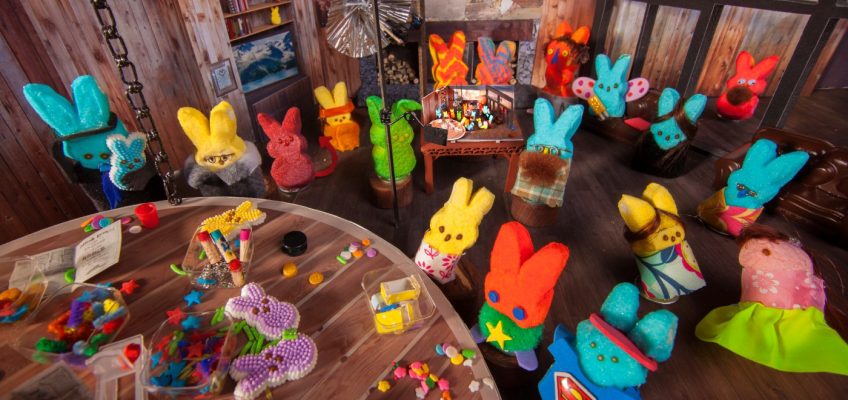Calling all our Peeps!
With just three weeks to go, the deadline is drawing near for the 2025 Pioneer Press Peeps Diorama contest.
Our annual competition, founded in 2004 and surpassing 4,000 entries to date, is a spring tradition for many solo Peeps artists of all ages as well as groups of friends, co-workers and families and also organizations including libraries, schools, senior living homes and more.
Newcomers are welcome, too. So if you’re indulging in a staycation for spring break, pick up some Peeps, fire up your imagination and join in on the fun!
Here’s the scoop:
To participate, make a diorama of any size featuring marshmallow Peeps. The theme is wide open — anything from current affairs to historical events, daily life and places in Minnesota, celebrities, religion, art or sports, movies or books … but the judges prefer family-friendly entries.
Some people create their scenes in diorama boxes, but this is not required. Ultimately, it’s your creativity we want to showcase.
When your marshmallow masterpiece is complete, take a photo or two of the diorama and email it to peeps@pioneerpress.com.
Here are the winners of the 2024 Pioneer Press Peeps Diorama Contest
In your email, be sure to include the title of the diorama and the name, phone number and email address of the creator or creators — in addition to their city of residence — so that we may contact them if needed.
If the creator is 12 or younger, or a teenager (ages 13 to 17), make sure you tell us in order to be eligible for the youth prizes (and include an adult’s name and contact info).
Also, please tell us about your artistic process — inspiration, methods, near-disasters — so that we can share your behind-the-Peeps story with the world.
The deadline to email photos of the diorama entries is noon on Friday, April 11. Winning entries will be featured in the Pioneer Press on Easter Sunday, April 20.
Related Articles
Trump visits the Kennedy Center as he puts his mark on the national arts institution
Made in St. Paul: Ice skating as storytelling and Black cultural expression, by figure skater Deneane Richburg’s organization Brownbody
‘Toothpick Boss’ Jerry Hackett, 85, painstakingly builds replicas of iconic Minnesota structures
A painting stolen from an Italian museum is found in England, but its new owner wants to keep it
Enter the 2025 Pioneer Press Peeps Diorama Contest
Photos of past Pioneer Press Peeps Diorama Contest winners and favorites
Winners will be chosen by a judging panel made up of Pioneer Press employees. Diorama qualities we seek include visual recognition of a theme, miniature craftsmanship (we love detail work) and the quality of the photograph (natural light, clean background).
Prizes include gift cards (for the top winners) and, for everyone else, certificates of honor or particiPEEPtion!
New this year: If you have won a top prize in the past, you will be placed in a “Peeps Masters” category to compete with your marshmallow peers.
Peep, Peep.




